|
|
|
June 2010 |
When Iranian Professors attack their own History:
The case of Dr. Parviz Rajabi
By: Kourosh Ahmadi & Shahyar Mahabadi
The writers of this article are among a new generation of cultural activists in the Iranian Diaspora in Western Europe and North America. They post articles regarding recent developments in Iranian culture and are Iranians on powerful mass forums such as Facebook, on-line newsgroups and the internet. More recently the political arena and most especially the academic discipline of Iranian Studies have drawn wide attention in venues such as Facebook. All three writers have been active against the anti-Iranian efforts of Eurocentrists in the Wikipedia and academia. The document below has opened an interesting discussion regarding an Iranian professor of Iranian Studies, Dr. Parviz Rajabi, who supports Eurocentrists and often alienates fellow Iranians with his anti-Iranian comments – his most recent victims have been the Zoroastrian Community of Iran.
Ever since 1979 Iranians have seen their history subjected to a series of attacks by three distinct impulses. The first are a series of Eurocentrist writers who from the late 1970s have worked hard to re-write key facets of Iran’s history at both the popular and scholastic level. The second can be traced to the fall of the Soviet Union by the early 1990s. This second impulse challenges the history of Iran by re-writing post-Soviet Communist-based narratives. These promote the anti-Persian brand of pan-Turkism, an initiative increasingly supported by Western interests.
The third anti-Iranian impulse is the most interesting of them all as it is composed of Iranians. This group poses the greatest challenge against the legacy of ancient Iran. The origins of this group are far beyond the scope of this article, but in general falls into two categories:
[A] Iranian members of the Muslim Brotherhood: Pan-Islamist advocates known also as the Ikhwan ol Muslimeen. These have a profound hatred of ancient Iran and work hard to smear its legacy and even try to eliminate its past.
[B] The Iranian Left: Present or past members of the Soviet-sponsored Iranian Tudeh Communist Party as well as other members of the Iranian Left. Of course not all of these hold radical views, but the majority have been deeply influenced by Soviet or Soviet-inspired anti-Iranian literature from Moscow and Baku between the 1930s and 1990s.
To summarize, members sympathetic to groups [A] and [B] now hold powerful academic posts in Iranian Studies programs in Iranian and Western universities.
The most prominent anti-Persian Iranian academic in Iran is Dr. Parviz Rajabi. In what can be described as Iranian self-denigration (or self-hate), Dr. Rajabi:
1) justifies attacks against Cyrus the Great
2) promotes Eurocentrist writers against ancient Iran
3) denies all dangers to Iranian ancient heritage sites
4) defends the racist anti-Iranian movie “300” and criticizes Iranian protests against that movie
5) profoundly insults Iran’s ancient Zoroastrian community
6) asserts that only Western writers are qualified to write about Iranian history
It is important to note that Dr. Rajabi is very cunning and uses colourful language. He always begins his discussions praising ancient Iran, thereby capturing the trust of his audience. It is only then when he begins to inject his personal anti-Persian views into the equation. He also has an excellent talent at mixing truth with deceptive remarks.

Dr. Rajabi claims that Iranians “lack logic”. He has deeply insulted Iran’s ancient Zoroastrian community. Dr. Rajabi criticizes Iranians for protesting against the racist movie 300 and Spiegel Magazine’s assault against Cyrus the Great. He makes false assertions such as claiming that ancient Iranian sites such as Pasargadae are in no physical danger. Dr. Rajabi also attacks Iranian historians in the west who seek to defend ancient Iran’s heritage.
One cannot help but ask this question:
How can a person with such a venomous dislike of ancient Iran be sitting in such a prominent position as one of the leading Iranian Studies chairs in Iran?
It is reputed (but not yet conclusively proven) that Dr. Rajabi has strong links with highly-reputable venues such as Encyclopaedia Iranica and the University of Chicago’s Persepolis Fortification Archive of Professor Matt Stolper.
Dr. Rajabi claims to be an expert in the following three areas: Islamic Studies, Iranian Studies, and Turkic Studies. This is indeed impressive as not even Professor Richard Nelson Frye (who is well-versed in Islamic and Turkic Studies) with over 50 years of publications to his credit claims expertise in all three areas. Dr. Rajabi’s extent of knowledge and sagacity are indeed impressive and deserve high praise, placing him on the same level of Professor Bernard Lewis.
(1) Dr. Rajabi’s support of attacks by Spiegel Magazine, Daily Telegraph and Livius.org against Cyrus the Great
Dr. Rajabi supports the views of Eurocentrist writers such as Jona Lendering, Matthias Schulz, and Harry De Quetteville that:
(a) All history as recorded in ancient Greek and Babylonian texts, the Bible and even archaeology that prove Cyrus as an illuminated ruler of ancient times are to be rejected as “propaganda”. There is now a “new history” that sees Cyrus as a brutal, bloodthirsty and heartless despot who supposedly tortured, butchered and deported as he saw fit.
(b) Cyrus’ enlightened and human rights policies towards civilians are all to be labelled as lies and “propaganda” made up by the former Pahlavi regime of Iran in the 1970s.
Jona Lendering has been claiming for over a decade in his www.Livius.org website that all notions of the Cyrus Cylinder being a human rights document are all “…imperial propaganda of Shah Mohammad Reza Pahlavi” (Link: http://www.livius.org/ct-cz/cyrus_I/cyrus_cylinder.html)
Lendering openly rejects Cyrus the Great as an illuminated ruler of ancient times. In fact if one looks at his writings, he insinuates that Cyrus was not great in history but Alexander was. Lendering is clearly a Eurocentrist, but strangely he tries to convince us that he is not.
In response to a Human Rights petition against his racist claims (see item (2) below), Lendering tries to label all who oppose his views as: “political activists who …share the propaganda of the late Shah:..”
Link: http://www.romanarmytalk.com/rat/viewtopic.php?f=18&t=10702&start=260
The case of Dr. Rajabi and his relationship with Jona Lendering will be discussed further below, but before this is it necessary to highlight the activities of other Eurocentrist writers.
Matthias Schulz of Spiegel Magazine launched his more recent Eurocentrist attack on July 15, 2008 by writing an article entitled “Falling for Ancient Propaganda: UN Honours Ancient Despot”. He labelled Cyrus the Great as
“…a Persian despot…upstart king…no humanist…no evidence of moral reforms or humane commandments…”.
Link: http://www.spiegel.de/international/world/0,1518,566027,00.html
Harry De Quetteville of the Daily Telegraph is especially racist, by going so far as to claim that the Cyrus Cylinder is simply a:
“…desire to claim some eastern roots "when it is so Western in its philosophical underpinnings… For all the criticisms of the Cyrus cylinder, it is unlikely to change perceptions of it in Iran, where Cyrus and the cylinder are regarded with intense national pride”

Harry de Quetteville wrote an especially racist article against Cyrus the Great and insulted the mass of the Iranian people. Dr. Rajabi supports his views.
Incredible as it may seem, Rajabi offers his direct support to the racist views of Matthias Schulz, Harry De Quetteville and Jona Lendering. Here is his characterization of the Cyrus Cylinder:
“That document [Cyrus Cylinder]…is not a Freedom and Human Rights document. If this was the case, then what was Cyrus the Great doing in Mesopotamia to grant freedom? Cyrus in Babylon and Mesopotamia torched and razed a number of places..he destroyed three great world empires. The ancient Mesopotamia was one of the world’s greatest civilizations/cultures which just one day after Cyrus’ arrival no longer existed...it is a big claim to state that Cyrus was the first to issue a document on the human rights to freedom and the same time forget the destroyed civilizations/cultures of Mesopotamia…Perhaps Cyrus… had his faults… ”
Translated; original Persian in the following Link:
http://www.etemaad.ir/Released/88-08-12/296.htm
آن استوانه... منشور آزادی و حقوق بشر نیست. اگر این طور بود پس کوروش بزرگ در بین النهرین چه کار می کرد که آزادی بدهد. کوروش در بابل و بین النهرین برخی جاها را نیز آتش زد و سوزاند و از بین برد. او سه امپراتوری بزرگ جهان را از بین برد. بین النهرین باستان یکی از بزرگ ترین فرهنگ ها بود که یک روز بعد از فتح بابل دیگر وجود نداشت... این ادعای بزرگی است که کوروش نخستین فرمان آزادی بشر را صادر کرد و در کنار آن به فرهنگ نابود شده بین النهرین توجه نکنیم....لابد که کورش هم به نام بشر عیبهایی داشته است...
Rajabi repeats in verbatim the exact same Eurocentrist narratives that have been in place since 1979. Like his Eurocentrist colleagues, Rajabi ignores the plethora of ancient evidence in the Bible, Greek references, archaeological finds, etc. Like the Eurocentrists, he arrives at new fictions aimed at showing Cyrus the Great as a destructive and rapacious invader, not unlike Genghis Khan or Attila the Hun.
For an in-depth analysis of Eurocentrist revisionist views kindly consult the articles below:
Response against Spiegel by Cyrus Kar
http://www.payvand.com/news/08/aug/1107.html
Response against Spiegel by Shaharbaraz (in Persian)
http://shahrbaraz.blogspot.com/2008/07/blog-post_23.html
Response to Spiegel Magazine’s attacks against Cyrus the Great by Kaveh Farrokh
http://www.kavehfarrokh.com/articles/nordicism/response-to-spiegel-magazine-2/
Retort to the Daily Telegraph’s article against Cyrus the Great by Kaveh Farrokh
It is intriguing as to why an Iranian would so whole-heartedly embrace the viewpoints of racists who wish to put down ancient Iran. A question that may be asked is whether Dr. Rajabi is suffering from a case of internalized colonialism (see (6) further below).
Dr. Rajabi’s last line in his translated quote is as cunning as it is intelligent. Of course there is some truth to the statement “…Perhaps Cyrus… had his faults…”. There is no such thing as a perfect human being and nobody is making such a claim about Cyrus the Great. The point is that Cyrus the Great was a pioneer in the realm of ideas, especially with respect to the notion of human rights, transcending the concepts of race, culture, language or religion. He is called “Great” due to his introduction of a new enlightened system of rule over a multinational world empire.

The Cyrus Cylinder
(2) Dr. Rajabi’s promotion of Eurocentric writers: Jona Lendering
It is at this juncture where another major question arises: why is Dr. Rajabi working to promote what is essentially a racist Eurocentric writer and weblogger, Jona Lendering, against Cyrus the Great?

Jona Lendering has consistently worked to negatively damage Iran’s ancient heritage by attacking the legacy of Cyrus the Great. He holds numerous controversial opinions about ancient Iran. Lendering also distorts all news of dangers to Iranian historical sites from mainstream Western media, websites, forums, Wikipedia and academic circles.
Jona Lendering is no stranger to controversy. His activities and writings in the Wikipedia and numerous forums and websites have resulted in a major backlash from grassroots Iranians inside Iran and in the Diaspora. There is now a petition against his activities, which has collected well over 1100 signatures to date:
Protest against Jona Lendering's anti-Iran campaign
http://www.gopetition.com/petitions/jona-lendering-anti-iran.html
What is truly remarkable is Lendering’s religious zeal in attacking and defaming Cyrus the Great. As noted before, Lendering repeats the mantra that the history of Cyrus the Great as a human rights pioneer is all “propaganda by the former Pahlavi regime”. By striking down Cyrus the Great, Lendering assaults the very core of Iran’s history and cultural identity.
For a more in-depth analysis of Mr. Lendering’s tireless efforts to attack Iranian history by defaming Cyrus the Great, kindly consult:
Jona Lendering’s Crusade against Cyrus the Great
http://www.rozanehmagazine.com/Rozanehweb/cyrusthegreat.html
By: Saam Safavi-Zadeh
The above article also cites examples of Lendering’s rudeness to Iranians who do not agree with his views. For an overview of Mr. Lendering’s efforts to subvert the Internet and Wikipedia against Cyrus the Great consult:
The Article of Cyrus Cylinder in Wikipedia is being vandalized
By: Koorosh Ahmadi
Lendering also has some very strange ideas about ancient Iran. Just three of Lendering’s controversial beliefs are that:
· There is no evidence of Mede Art and Architecture.
· There is categorically no evidence that Nowruz was known or practiced at Persepolis.
· There are no dangers to any historical sites in Iran.
Lendering’s ideas were completely discredited in the Bryn Mawr on-line magazine:
Collaborative Response to Lendering
Link: http://bmcr.brynmawr.edu/2009/2009-02-02.html
February 2, 2009
But perhaps even more disturbing is Lendering’s especially racist observation that:
“Iranian art only looks beautiful but is actually ugly when you see it for real”
Posted in a Dutch website “Onze Man in Teheran” [Our Man in Tehran]
Link: http://onzemaninteheran.com/?p=549
Despite the discrediting of his politically motivated “reviews” and his exposure as a Eurocentrist, Lendering remains unrepentant. He continues to maintain that he is somehow an “advocate” of Iranians and their history by referring to his writings on his website. He has even succeeded in posting his articles in a number of Iranian venues such as the Iran Chamber of Commerce.
Lendering’s claims now run hollow with the majority of Iranians inside Iran and in the Diaspora. Below are excerpts of postings by Mr. Ali Hessamfar in debate with Mr. Roger Pearse – this has been shortened for brevity but readers are encouraged to read the entire link:
Link: http://www.roger-pearse.com/weblog/?p=2598
= = = = = = = = = = =
Jona Lendering…job is to undermine the pre-Islamic Iranian history…his papers have no weight in the academic world… Jona Lendering has devoted his life just to attack Cyrus by any means possible, spending hours daily on Wikipedia, or writing papers attacking Cyrus or anybody who writes about Cyrus (like Dr. Kaveh Farrokh)…As for his website [www.Livius.org], it is quite primitive and far from informative!
= = = = = = = = = = =
Mr. Hessamfar has revealed three interesting points.
First, as Mr. Hessamfar has noted, Jona Lendering often attacks Iranian writers, cultural activists and historians with special venom. One example occurred, a number of years ago when Lendering mobilized a number of his Wikipedia drones (usually anti-Iranian Wiki users such as ChrisO, Doug Weller, etc.) in what can only be called a smear campaign. To summarize, Lendering succeeded in banning the CAIS site (http://www.cais-soas.com/index.htm) from being referenced in certain articles in Wikipedia. This campaign against the CAIS site and its director, Shapur Suren-Pahlav, was defamatory, unjust, rude, unbalanced and unfair.
Secondly, Mr. Hessamfar has also drawn attention to the fact that Lendering’s Livius website is often flagged for errors, especially in reference to Iran. Lendering often relies on feedback from users and experts to correct his mistakes (i.e. the Iranian pantheon, Mithraism, etc.). One interesting example of Lendering’s errors on Iran is the claim that “the site of Gotarzes II at Behistun does not exist today…” when in fact it does. See the link below for more details:
The Case of Gotarzes II
Link: http://www.rozanehmagazine.com/Rozanehweb/DKFGotarze.html
Lendering has also been caught making egregious errors even in his own claimed specialty of ancient Greece and Rome. Note the link below on the HistoryKB site which highlights Lendering’s confusion about the location of ancient Macedonia (he writes a lot about Ancient Greece, Alexander, etc.):
Jona Lendering Is Still Lying on His Site
http://www.historykb.com/Uwe/Forum.aspx/ancient/3994/Jona-Lendering-is-still-lying-on-his-site
The third point which Mr. Hessamfar makes is in regards to the amazing parallel between Lendering and pan-Islamic fanatics, especially in regard to Cyrus the Great. A classic example is the late Ayatollah Sadegh Khalkhali (1926-2003) who described Cyrus the Great as a “… tyrant, a liar…” (Molavi, A., 2005, The Soul of Iran. Norton, pp.14)
Like Lendering, Schulz, and De Quetteville, Khalkhali also argued that all history relating to Cyrus the Great’s benevolence was all just made up by the late Shah, or as Lendering insists: “imperial propaganda of Shah Mohammad Reza Pahlavi”. It is no wonder why Rajabi is working so hard to support Lendering as both have much in common with pan-Muslim fanatics like the late Khalkhali.
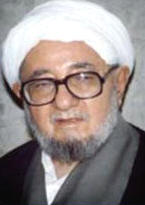
The late pan-Islamist activist Ayatollah Sadegh Khalkhali (1926-2003). Khalkhali hated ancient Iran and "called for the destruction of the Cyrus tomb and remains of the two-thousand-year-old Persian palace in Shiraz, Fars Province, the Persepolis" (see Molavi, 2005, p.14) Elaine Sciolino who interviewed Ayatollah Majdeddin Mahallati of Shiraz has confirmed that Khalkhali came to Persepolis with "a band of thugs" and after a thundering speech linking Cyrus to the late Shah, tried to destroy Persepolis – mercifully he and his rabble were stopped by local residents and non-political clergy (Sciolino, E., 2000, The Soul of Iran, Touchstone, pp.168). Khalkhali had spent time in Psychiatric wards before the 1978-1979 Iranian revolution. Parviz Rajabi defends Western Eurocentrists who express similar anti-Cyrus opinions as the late Khalkhali.
One thing is certain: Jona Lendering, who is reputedly provided with an office in Tehran, is a frequent traveller to Iran. He proudly admits this in his website:
“As of 2008, Livius Onderwijs [his school in Amsterdam] has six teachers, about 500-600 students a year, and offers tours to countries like Italy, Turkey, Iran, and Libya. The field trips help to etch into the students' minds some of what they've learned at the school.”
Link: http://www.livius.org/about.html
It would seem that Lendering is working hard to ‘etch’ his controversial (or racist) anti-Cyrus views “into the students' minds”.
Lendering has powerful friends inside Iran: Dr. Rajabi is currently attempting to fund a massive project to translate Lendering’s controversial narratives relating to Cyrus the Great and Iran from his Livius.org website into Persian.
If Dr. Rajabi succeeds in his project to translate Livius.org into Persian, he can then say that “Western experts” [i.e. Lendering] support claims that Cyrus the Great was not a pioneer of human rights or that the Medes [ancient Iranians] had no architecture of their own.
Many have long known of Mr. Lendering’s controversial links to Iranian anti-Persianists within Iran and in the West. However it is important to note that not all within Iran’s academic community support Jona Lendering. There is in fact mounting opposition within Iran’s universities against his Iranian supporter, Dr. Rajabi. For an indication of this kindly consult:
All of this information leads to two simple questions. What does Dr. Rajabi intend to achieve, especially in the face of mounting opposition by his own academic colleagues? Second, why would Dr. Rajabi, an Iranian professor of history, promote a biased Eurocentrist writer (Jona Lendering) who harbours such a profound dislike of Cyrus the Great?
(3) Dr. Rajabi’s denial of all dangers to Iranian ancient heritage sites
Dr. Rajabi also dismisses dangers to the site of Pasargadae (site of Cyrus the Great’s tomb) as a result of humidity generated by the recently built Sivand Dam. Below is his statement:
“A good archaeologist/academic has proven scientifically that the humidity is good for Pasargadae. Has humidity damaged anything around the Karaj Dam [near Tehran]? In Isfahan they say that they should not construct the subway tunnel as it will result in the destruction of the Zayende Rood [River]. But has any damage been resulted as a result of the metro in Paris, London or Moscow, with the existence of all those famous rivers? Unfortunately, as I mentioned before, we are still following an oral tradition and make fuss only based on what we hear. Somebody has come and started the Pasargadae website, talking about ancient cultural heritage and …and then suddenly criticizes hijab …what is the relation between these, I do not know…”
Translated; original Persian in the following Link:
http://www.etemaad.ir/Released/88-08-12/296.htm
یک باستان شناس خوب به صورت علمی ثابت کرده این رطوبت برای پاسارگاد خوب است. اطراف همین سد کرج آیا رطوبت به چیزی ضرر زده است؟ در اصفهان هم می گویند نباید مترو احداث شود چون باعث تخریب زاینده رود می شود، اما در پاریس و لندن و مسکو با آن همه رودخانه معروف با وجود مترو آیا آسیبی رسیده است. متاسفانه همان طور که اشاره کردم هنوز روایی هستیم و روی شنیده های شاخ و برگ داده شده هیاهو می کنیم. یکی آمده سایت پاسارگاد راه انداخته و حرف از میراث فرهنگی و وامصیبتا می زند و یکدفعه آن وسط می پرد و از حجاب و برخوردها با آن می گوید. اینها چه ارتباطی به هم دارند، من نمی دانم
Dr. Rajabi is providing four distorted pieces of information:
a] That no dangers exist for Pasargadae
b] The sites of Isfahan are in no danger
c] Defamation of the Pasargadae Foundation
d] Claiming that no dangers exist to any sites in Iran
Kindly allow us to critically examine each of these assertions.
a] Dr. Rajabi: claims no dangers to Pasargadae. Dr. Rajabi’s claim that humidity is good for Pasargadae is as untrue as it is preposterous. There is physical evidence that the humidity of Sivand Dam is damaging Pasargadae. See below the photograph taken by members of the Pasargadae Society in Iran:

Erosion of the tomb of Cyrus the Great in Pasargadae. Note the process of erosion that is now in place due to the Sivand Dam. This makes a mockery of Rajabi’s statement that “…humidity is good for Pasargadae”.
(Photo courtesy of www.savepasargad.com)
If this trend continues, the Pasargadae site will be literally eroded to dust at an accelerated rate.
An English expression adroitly states that “…a picture says a thousand words”. It is not surprising why Dr. Rajabi seeks to smear the Pasargadae Foundation as this body has consistently provided photographic evidence and reports from non-partisan organizations and researchers inside Iran.
Dr. Rajabi has set a new standard in the field of archaeology by claiming that humidity is good for archaeological sites. If indeed such a study exists with regards to Pasargadae, then Dr. Rajabi has failed to cite it. Even if such a study has been conducted, what was the methodology and who was the “good archaeologist/academic” (باستان شناس خوب)?
If Dr. Rajabi is claiming western sources to support his false claim, then he is certainly contradicted by reputable western sources such as Guardian Magazine:
Dam is threat to Iran's heritage: UNESCO appeals for help as ancient sites face being flooded
Link: http://www.guardian.co.uk/world/2004/dec/23/iran.artsnews
But the fact of the matter is that much damage has already been done to Pasargadae. The recent “repairs” done to the site were an unmitigated disaster:

“Repairs” to Pasargadae. The methods used were crude, inflicting much damage to the site’s infrastructure. Note that standard industrial plaster has been used to cover in gaps in the structure.
Below are some links outlining the recent damages to Pasargadae:
Crude restoration spoils authenticity of Cyrus Tomb
http://www.mehrnews.com/en/NewsDetail.aspx?NewsID=784915
Mehr News Agency of Iran
Crude restoration spoils authenticity of Cyrus Tomb
http://www.payvand.com/news/08/nov/1168.html
Payvand News of Iran
This leaves only one “good archaeologist/academic - باستان شناس خوب -” in support of Dr. Rajabi: Mr. Jona Lendering in Holland who runs the www.Livius.org website. Lendering has made the following claim as seen in a Bryn Mawr posting which questioned it:
“Lendering (in footnote 12) reports that: An example is the statement that a dam on the river Sivand will endanger the site of Pasargadae, a report that often surfaces in the blogosphere…This is innuendo, not scholarship…"
Link: http://bmcr.brynmawr.edu/2009/2009-02-02.html
Really? In addition to all of the reports we have cited here – yet another piece of news has come from Iran on June 17, 2010:

سطح رطوبت پاسارگاد به ٣٠ درجه رسید
The level of Humidity at Pasargadae reaches 30 degrees
http://tabnak.ir/fa/pages/?cid=99722
This report makes very clear that present climactic conditions (as a result of the Sivand Dam) are posing a very serious threat to Pasargadae. The Mehr and Tabnak News agencies are non-partisan and located inside Iran. Lendering has done much damage to Iranians by constantly blocking such news from reaching western academic and media forums. It is not surprising why Iranians continue to sign the petition against Lendering.
But Lendering’s Orientalism is understandable – he is after all a Eurocentrist - but why would Dr. Rajabi work so hard to contradict what is essentially irrefutable evidence?
b] Dr. Rajabi denies damages at Isfahan. It is not clear why Dr. Rajabi would claim that all is fine with Isfahan when news and photographs from inside the city say otherwise. Much damage has already been done at the Pol-e-Khaju (Khaju Bridge). Kindly see photos below:

The stairways of Pol-e-Khaju (Khaju Bridge) in Isfahan with its steps hacked off. The purpose of these actions is unclear, but it is clear that the “restoration” team is not aware of archaeological restoration techniques. They show little regard for the historical heritage of the site.

Safavid era blocks from Pol e Khaju with rare inscriptions now lie in ruins.
c] Dr. Rajabi’s attacks against the Pasargadae Foundation. The Pasargadae Foundation is a non-partisan, non-political organization with members inside and outside of Iran. Dr. Rajabi has repeatedly attacked this Foundation in order to convince readers that no problems exist with sites inside of Iran.
The reason for that is because the site provides documented cases of vandalism and destruction of ancient sites inside Iran. Their reports are almost always verified by news sources inside of Iran, as well as western news outlets. The sources inside Iran are the Cultural Heritage News Agency of Iran and Mehr News of Iran whose reports often parallel those of the Foundation. The example of the Guardian newspaper has been alluded to earlier.
It is also important to note that members of the Foundation inside Iran often produce documented photographs of damages to sites inside Iran. Put simply, they provide documented evidence which is verified by independent sources. The Foundation’s reports regarding damages to the site of Pasargadae or Isfahan’s Pol-e-Khaju, for example, are based on the aforementioned independent sites.
Defamation tactics are double-edged especially when such actions are put under the rigorous eye of close scrutiny. Essentially, what Dr. Rajabi states about the Foundation diverges widely with the actual facts. He was in fact forced to retract much of what he said – below is his discourse with the director of the Pasargadae Foundation, Madame Shokooh Mirzadegi (in Persian):
نامهنگاری دکتر پرويز رجبی و شکوه میرزادگی در ارتباط با آبگیری سد سیوند
Link: http://shokoohmirzadegi.com/02.Articles/rajabi.htm
Despite this, Rajabi has again resumed his defamatory tactics. It is left up to the readers to arrive at their conclusions.
d] Dr. Rajabi: No dangers exist against any ancient sites in Iran. This is again a strange fiction, given the vast amount of documentation, thanks to dedicated reporters and researchers inside of Iran.
Just two examples will suffice to dismiss Dr. Rajabi’s assertions:


The ancient 7000-year site of Susa severely damaged to make way for hotel construction. At left are pictures of a damaged wall and to the right are the foundations laid at Susa for the “Laleh Hotel”. The news and photos first appeared in Iran’s Tabnak News:
(http://www.tabnak.ir/fa/pages/?cid=14281).
For a report in English consult:
As noted by the above referenced report:
“In the second week of August 2008 a hotel construction company brought bulldozers to carve out 10,000 square meters from the ancient site of Susa…”
Another tragedy that has occurred is at the site of the Temple of Anahita at Kangavar in Kermanshah Province in western Iran. There has been a massive “construction” project at the Anahita Temple in Kangavar which was finally halted in the last week of January 2010. The damage however has been done.
Concrete foundations had been laid at the site for the construction of an Imamzadeh Ebrahim and a hotel in December 2009. Thanks to Mehr News Agency of Iran who raised the alarm about the destruction being wrought against the site, the “construction” crews have been forced to stop; hopefully, to never return. For more information consult:

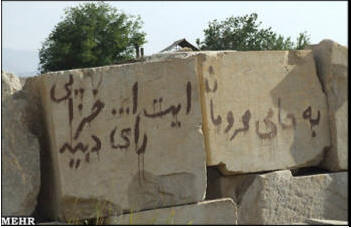
Woman passes by steel frames for hotel construction dumped at the ancient Temple of Anahita (left) and graffiti sprayed (or written) on ancient blocks at the Anahita site to advertise for a candidate in an election.
As a resident of Iran and as a major professor there, Dr. Rajabi must be aware of the disaster that has taken place at places such as Kangavar and Isfahan.
There is one technical conclusion here:
Dr. Rajabi supports anti-Iranists inside of Iran and Eurocentrists (esp. Mr. Lendering) who claim that no dangers exist to sites such as Pasargadae.
(4) Dr. Rajabi criticizes Iranians for defending their ancient heritage against the racist movie “300”
The movie “300” portrays Iranians as grotesque demons and ogres, Iranian women as mindless harem playthings, and King Xerxes as a skimpily clad androgynous character.

A racist image of Iranians in the movie 300 – the producers clearly portrayed Iranians as “evil” in what is essentially a politically-motivated picture. Dr. Rajabi condemns Iranians for trying to defend their dignity and heritage.
The movie has caused a major negative reaction among Iranians both within Iran and the Diaspora. The Iranian Academy of the Arts complained directly to UNESCO, noting that the movie 300 was a direct assault on ancient Iran’s historical identity:
Iranian Academy of Arts to submit UNESCO declaration against '300'
http://www.payvand.com/news/07/mar/1224.html
Numerous Iranian-penned articles also appeared in the Diaspora:
Go tell the Spartans: How "300" misrepresents Persians in history
http://www.iranian.com/Daryaee/2007/March/300/index.html
By: Dr. Touraj Daryaee
The 300 Movie: Separating fact from Fiction
http://www.payvand.com/news/07/mar/1246.html
By: Dr. Kaveh Farrokh
The movie 300 has also been criticized by Europeans for its false and racist portrayals of Iranians:
"300" the Movie, Battle of Thermopylae - Facts & Fictions!
http://www.irandefence.net/showthread.php?t=30287
By: Ivan Kesic
Just 300, but CG on their Side
http://findarticles.com/p/articles/mi_kmtpi/is_200703/ai_n18699654/
By: Steven Rea in the Philadelphia Daily News (September 20, 2009)
http://www.counterpunch.org/leupp03312007.html
By Gary Leupp
Despite the chorus of Iranian and Western protests, the damage has been done. This is because movies and media have an enormous impact on the human perception of reality and events – and the movie 300 has done just that.
Numbers of western intellectuals have embraced the movie as representative of historical truth. Victor Davis Hanson of the Hoover Institution and Stanford University, states boldly of the 300 movie that:
“…the ancient Greeks … as millions of moviegoers seem to sense, far more like us than the enemy who ultimately failed to conquer them.”
Link: http://www.realclearpolitics.com/articles/2007/03/300_fact_or_fiction.html
Hanson makes two points very clear:
1) The movie 300 is definitely about “Us” [West and North America] against “Them” [Iranians]. Hanson is either silent or ignorant of the powerful influence of ancient Iran on world civilization. True, Greece is the primary founder of Western civilization, but the Eurocentrist axiom that Persia or the east had no influence on Europe’s civilization is oxymoronic.
2) The movie 300 is taken very seriously by many in the west who use it as a negative cultural compass or reference point with respect to Iran and Iranians.
It is here where Dr. Rajabi takes a strange position. He condemns Iranians for protesting against 300. Rajabi is apparently ignorant of Western writers who also protested against the movie.
It is somewhat difficult to follow Dr. Rajabi’s reasoning as seen in the crafty statement below:
I am sorry to see our intellectuals shouting and raising such a fuss. If we want to criticize then we must criticize against attacks made against Christianity and Jesus and other insults made to values… we should not just protest to such nonsense materials relating to our own domain. Of course their Leonidas is the equivalent of our own Ariobarzan. How come when Ariobarzan stands against Alexander with 300 men he becomes a national hero but Leonidas does not have the right to stand against the Persian army at Thermopylae…
Translated; original Persian in the following Link:
http://www.etemaad.ir/Released/88-08-12/296.htm
من از روشنفکران خودمان تاسف می خورم که فریاد واویلا و وامصیبتا سر دادند . .. اگر انتقاد می کنیم باید به همه موارد اعتراض کنیم. به مسیحیت و حضرت عیسی و سایر ارزش های دیگر هم اهانت می شود نه اینکه فقط به این مزخرفات مربوط به خودمان اعتراض کنیم. البته لئونیداس آنها همان آریو برزن خودمان است. چطور آریو برزن با 300 نفر جلوی اسکندر ایستادگی می کند و قهرمان ملی می شود ولی لئونیداس حق ندارد در آن تنگه ترموپیل جلوی سپاه ایران ایستادگی کند.
Dr. Rajabi is unfairly defaming Iranians by providing a false portrayal of what they are saying. First, no Iranians have questioned the right of Leonidas to defend his country or the fact that he is a national hero in Greece.
The issue is the false portrayal of Iranians and the distortion of historical facts.
Note Rajabi’s following statement:
“…in any event the movie is a cheap commercial product which Iranians have made it best-seller …this is the same Hollywood that shows Christ riding backwards on a donkey….
Translated; original Persian in the following Link:
http://www.etemaad.ir/Released/88-08-12/296.htm
به هر حال فیلم یک اثر مزخرف تجاری است که ایرانی ها آن را پرفروش کرده اند. ساخته همان هالیوودی است که مسیح را وارونه سوار بر الاغ می کند
It is simply incredible that Dr. Rajabi claims that the 300 movie has been promoted due to Iranians protests. The claim is simplistic and baseless.
Dr. Rajabi is mixing falsehood with truth. Nobody is disputing the fact that the movie is a commercial product. The fundamental issue is that this is a politically and racially motivated movie – presented as “entertainment” as noted by the aforementioned Western-penned articles by Leupp, Rea and Kesic.
Instead of focusing on the core issues, Dr. Rajabi insists on falsely portraying Iranians as chauvinistic. Note the statement below:
“…Why do we not point to Xenophon whose Cyropaedia with it high praise for Cyrus has made him an exulted character for all eras [of human history]?”
Translated; original Persian in the following Link:
http://www.etemaad.ir/Released/88-08-12/296.htm
چرا به گزنفون اشاره نداریم که در کوروش نامه از کوروش یک شخصیت والا برای تمام اعصار ساخته است...
Rajabi makes two contradictions here: first, if Dr. Rajabi is somehow saying that Iranians do not acknowledge Greco-Roman sources that praise ancient Iran, then he is completely mistaken. Xenophon and those Greeks praising Persia are already praised by an Iranian historian in the below article:
Retort to the Daily Telegraph’s article against Cyrus the Great
Rajabi’s second contradiction is in the way he contradicts himself. As we saw earlier, Rajabi defends the anti-Iranian stance of Eurocentrists such as De Quetteville and Lendering against Cyrus the Great – but here he is taking a 180 degree turn! This reveals confusion or at best self-doubt on the part of Dr. Rajabi when it comes to Cyrus’ mighty legacy.
Unfortunately, Dr. Rajabi has chosen to ignore the various repercussions of the movie and inexplicably works to defame his countrymen and women.
It is interesting (and disturbing) that Dr. Rajabi makes no mention of how deeply the 300 movie has insulted the dignity and humanity of the ancient women of Iran.
(5) Dr. Rajabi’s Profound Insults against the ancient Zoroastrian community
Most disturbing are the attacks by Dr. Rajabi against Iran’s Zoroastrian community and Iran’s pre-Islamic Sassanian past.
But before we undertake this part of the discussion, a very important issue must be addressed: In no way whatsoever are the Arabs to be disrespected, as they are a great people of human civilization with mighty contributions in their own right.
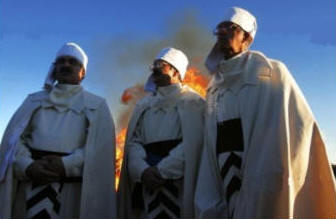
Zoroastrian priests or Magi at the fire temple in Kerman. Dr. Rajabi’s statements have not only insulted a large proportion of Iranians but have also outraged the ancient Zoroastrian community.
Dr. Rajabi’s attacks against the Zoroastrians have been so bitter that the Zoroastrian community has been forced to respond. Note the retort written by Ardashir Khorshidian of the Tehran Mobad Zoroastrian Council to Dr. Rajabi:
“...how does insulting the great Iranian prophet Zoroaster... the holy Avesta, and putting down your Zoroastrian countrymen, who are the most ancient Iranians, and have been and remain among the most loyal serving citizens of this country of Ahura, solve your ills and those of the country...can you not contemplate that like the Firdowsi’s and Hafez’s...bringing Iranians closer to their true identity would do a much better service for the people of this country?”
Source: http://www.kavehfarrokh.com/wp-content/uploads/2010/04/post-3713.pdf (in Persian only)
For further information on Khorshidian’s responses kindly consult:
Link: http://www.berasad.com/fa/content/view/3088/ (in Persian only)
A complete analysis of Dr. Rajabi’s distortions against pre-Islamic Iran and the Zoroastrians would require volumes of textbooks to correct, but just two examples of the distinguished professor’s beliefs suffice to display his views.
One example is Dr. Rajabi’s claim that no books were ever burned during the invasions of Iran during the Arab conquests. Note the statement below:
“...in the case of burning libraries and books...we must not believe this event...”
Translated; original Persian in the following Link:
http://www.etemaad.ir/Released/88-08-12/296.htm
در مورد کتابخانه ها و کتابسوزی نباید این اتفاق را باور کرد …
It is not clear how Dr. Rajabi has reached such a conclusion in sheer defiance of established historiography. What is certain is that his unsubstantiated statements run contrary to what is available in mainstream historiography. Ayatollahi and Haghshenas, for example, clearly state that:
“...after the conquest of Western Persia and the fall and looting of Ctesiphon by the Arabs, when asked about the fate of the large library in Jundi-Shapur university, the second Kalifa replied: “The Holy Book will suffice our needs”. His reply caused the burning of this large library that according to...a number of Arab historians contained over half a million books...”
Source: Ayatollahi & Haghshenas, 2003, pp.171. In Ayatollahi, H., & Haghshenas, Sh. (2003). The Book of Iran: The History of Iranian Art. Teheran: Center for International Cultural Studies.
If Dr. Rajabi believes that this historical event is simply a concoction by Iranian nationalists, then he is certainly contradicted by Professor John Joseph Saunders, who is neither Iranian nor politically motivated. Professor Saunders has noted that:
“There is...evidence that the Arabs burnt the Zoroastrian sacred books of Persia which to them would be heathen writings...”
Source: Saunders, 1990, pp.63, in Saunders, J.J. (1990). History of Medieval Islam. Routledge Publishers
In lieu of these citations, Rajabi’s statements are indeed extraordinary.
(6) Dr. Rajabi: Iranians “do not rely on Logic”.
One of Rajabi’s most controversial claims is that Iranians “…do not rely on logic”. But before we discuss this claim, we are obliged to examine yet another statement by Rajabi – one that again mixes truth with falsehood. Note his statement below made in the context of his views on the 300 movie:
“…in my opinion a historian must be nation-less and look at events without bias and emotion at both sides…
Translated; original Persian in the following Link:
http://www.etemaad.ir/Released/88-08-12/296.htm
به نظر من مورخ در تاریخ نویسی باید بی وطن باشد و بدون تعصب و احساس به هر دو طرف بنگرد.
Dr. Rajabi is stating the obvious: Yes it is true that historians must be unbiased. If a historian is biased then he or she risks becoming a propagandist, like Hanson who was mentioned previously.
But what does the term “nation-less” or بی وطن mean? Is the term implicitly disqualifying Iranians from writing about their own history? If so, then who is qualified? The term sounds strangely similar to the propaganda terminology of the now-discredited Communists of the former Soviet Union.
There is little doubt that Dr. Rajabi prefers racist Eurocentrist writers instead of non-partisan (Iranian or non-Iranian) historians. The following statement made by Dr. Rajabi with respect to the attacks against Cyrus the Great makes his support for Eurocentirsts very clear:
“I have read this article [Schulz’s article in Spiegel] several times and I find no reason to have this make me yell…the west has been praising our culture, literature and civilization for 150 years… let us see the experts looking at history in a refereed/objective way…we [Iranians] do not have the habit of… relying on logic…
Translated; original Persian in the following Link:
http://www.etemaad.ir/Released/88-08-12/296.htm
من این مقاله را چند بار خواندم و در آن هیچ نیشگونی را نیافتم که فریادم را دربیاورد... غرب 150 سال است که از فرهنگ و ادب و مدنیت ما با ستایش یاد میکند ...متخصصان را در حال داوری به موضوعی تاریخی ببینم... ما این عادت را هم نداریم به... منطق تکیه کنیم...
Dr. Rajabi has proven that he shares the same anti-Persian racist views as Eurocentirsts. Note the following statement:
“…let us see the experts looking at history in a refereed/objective way… we [Iranians] do not have the habit of… relying on logic…
The late Edward Said, the author of Orientalism, would roll in his grave to know that a person from the Middle East could utter such rapacious and condescending statements against his own fellow West Asian folk. Said in fact was highly critical of Arab elites who internalized the racist attitudes of the Occident into their minds. Rajabi has certainly proven that members of the Iranian educated elite are also capable of internalizing racist Western attitudes.
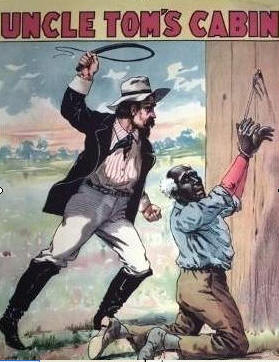
Slave-master Legree whipping his slave, Uncle Tom - from Harriet Beecher Stowe’s (1811 –1896) novel “Uncle Tom’s Cabin”. Stowe’s anti-slavery book highlights the role of the faithful and long-suffering servant who remains loyal to his white master until his dying breath. This work clearly highlights the tragedy of the non-European who believes himself to be the intellectual inferior of the European. Dr. Rajabi’s belief that “we [Iranians] do not rely on logic” is a tragic example of how Iranians too can become Uncle Toms. Slavery, as Stowe noted, is not just a physical state - it is a state of mind.
Towards the end of the movie 300, there is a statement to the effect that the war is against “the Mysticism” of Persia. By implication, “the West” stands for the antithesis of Mysticism – namely, “Reason and Learning”.
Dr. Rajabi supports the producers of the 300 movie – he opines that Iranians are not qualified to be historians as they “do not rely on logic”.
This is chillingly similar to colonialist thinkers of the 19th century who viewed non-Europeans as less intelligent and incapable of logical thought and analysis – Edward Said noted how Eurocentrists viewed peoples of the Middle East as “child-like” or “childish”.
Dr. Rajabi has certainly broken new ground: he is the first Iranian to agree with Western Eurocentrists that Iranians “do not rely on logic”, hence unqualified to write about their own history.
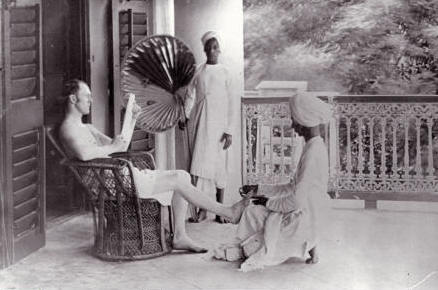
British Empire colonist, being served by Indian servants in the 1920s. Modern Eurocentrists continue to promote the racist views of their imperial colonial predecessors against non-Europeans.
(7) Rajabi’s links to the Tudeh Party, pan-Turkism and separatism
There is also the interesting question of Dr. Rajabi’s connection with a 1940s Moscow-sponsored separatist movement which was trying to separate northwest Iran and attach it to the former Soviet Union. Dr. Rajabi openly declares his father’s association with the separatists (known as the Ferqeh Demokrat) below:
“When I was three years old we returned to my father’s birthplace Aq-kand (midway between Zanjan and Mianeh) so he could be active in Ferqeh Demokrat. Finally due to the clashes between the government at the time and Ferqeh Demokrat on 21 Azar 1325 [December 12, 1946] and after my father’s escape to the USSR we were obliged to return with my mother to Quchan”
Translated; original Persian in the following Link:
http://www.etemaad.ir/Released/88-08-12/296.htm
در سه سالگی به سبب بازگشت پدرم به زادگاهش برای فعالیت در فرقه دموکرات به روستای آق کند (میان راه زنجان- میانه) رفتیم. سپس تا 21 آذر 1325 و ماجرای درگیری فرقه دموکرات و دولت وقت مجبور شدیم پس از فرار پدرم به شوروی به همراه مادرم به قوچان بازگردیم.
There is little doubt as to who and what the Ferqeh Demokrat were and what they stood for.
A] They were taking orders from Joseph Stalin in Moscow in the 1940s to Balkanize Iran.
B] Their ideology was racialist and pan-Turkist.

A photo of Seyyed Jafar Pishevari’s Russo- Soviet controlled separatist movement. Note the portraits of Russian Communist leaders Vladimir Lenin (note beard and bald pate) and Joseph Stalin and the Communist star above them. The “Democrats” were vehemently against Iranian history and the Persian language – they were also the puppets of Moscow and Baku.
Plenty of citations may be produced by western, Russian and Iranian Azarbaijani sources to consistently corroborate the true nature of this movement. Below are just a handful of examples.
Nosratollah Jahanshahlu-Afshar who was a former member of the Pishevari cabinet is very clear as to what the local Tudeh Party was: Puppets of the Communist leaders of Moscow and Baku – for information on how they were puppets, Readers are strongly encouraged to read Jahanshahlu-Afshar’s book on how the Pishevair regime was under the direct control of Moscow and Baku (especially the introduction, the chapters on how Pishevari was placed in power by the Soviet Union, and the final chapter when Pishevari and his “Democrats” went to exile in Baku):
Ma va Biganegan: Khaterate Siyasiye Dr. Bosratollah Jahanshalu-Afshar [Us and the Foreigners: The Political Memoirs of Dr. Bosratollah Jahanshalu-Afshar]. Tehran: Entesharate Samarqand.
Jahanshahlu-Afshar notes how the “Democrats” forced workers to wear Communist symbols and put up posters of Joseph Stalin, the dictator of the ex-Soviet Union. Stalin’s pictures were plastered on Tabriz’s government buildings. Below are Jahanshahlu-Afshar’s own observations of the local Communists and the so-called “Democrats”:
“…forced workers to wear belts with buckles gearing the hammer and sickle motif…slogans were overtly Communist and even separatist…” (2006, pp.97) and that “…the walls and doors of the Workers Union building in Tabriz was plastered with portraits of Stalin, Bagherov and other leaders of the Bolshevik Party” (Jahanshahlu-Afshar, 2006, pp.151).
There are many sources verifying the low popularity of the Pishevari regime among Iran’s Azarbaijani population. Let us share some quotes here:
“…quickly became an unpopular police state dependent on the Soviet Union for its survival” (Ward, 2009, pp.182).
Source: Ward, S.R. (2009). Immortal: A Military History of Iran and its Armed Forces. Georgetown University Press.
There is also very little doubt as to how the Azarbaijanis felt when the Iranian army liberated Tabriz and Azarbaijan province from the Communists and their puppet regime of Mr. Pishevari. Note the following reference by Dr. Gary. R. Hess:
“On December 11, an Iranian force entered Tabriz and the Pishevari government quickly collapsed. Indeed the Iranian army men were enthusiastically welcomed by the people of Azerbaijan, who strongly preferred domination by Tehran rather than Moscow...”
(Source: Hess, G.R., Political Science Quarterly, Vol. 89, No. 1, March., 1974)
As we noted, the Pishevari movement was anything but “Democrat”. It was also profoundly racist and anti-Persian. They re-wrote history books which printed Soviet Russian propaganda – these pretended that Azarbaijan was never a part of Iran and that Persian was a language alien to the province. The Soviets also produced movies which completely re-wrote history – these again attacked the Persian language and pretended that Iran was not of historical importance. They labelled all historiography related to Iran as “Persian chauvinism” – a term invented by Mr. Mir Jaafar Bagherov, the head of the Baku Communists.
The Persian language was virtually banned and was targeted for elimination – remember that the Pishevari regime was simply acting under the orders of Baku and Moscow at the time.
Pishevari and his followers fled to Baku after the uprising by the local Azarbaijanis and the arrival of the Iranian army.
Now this information will confuse the readers – Dr. Rajabi proudly claims that he visited the grave of Pishevari in Baku.
“…Fourteen day sojourn in Baku went by like lightning. Only the grave of Pishevari has remained in my memory…
Translated; original Persian in the following Link: http://parvizrajabi.blogspot.com/2009_04_01_archive.html
چهارده روز اقامت در باکو به سرعت برق سپری شد. فقط گور پیشه وری در یادم مانده....
The logic of this action is unclear: why would an Iranian honour a person who was essentially a pro-Soviet puppet and supported racist anti-Persian policies? Dr. Rajabi is certainly proud to declare his late father’s association with that pro-Moscow movement – as we noted earlier.
As a historian, Dr. Rajabi has never condemned the separatist and pro-Russian nature of his late father’s organization. So, what does Dr. Rajabi’s visit to Pishevari’s grave in Baku signify?
Olson, who has written extensively on the threat of pan-Turkism in Iran, is very clear that prominent Iranians visiting the grave of Pishevari are either willingly or unwittingly supporting pan-Turkism. The leader of Iran’s separatist movement, Mahmoudali Chehreganli, who has met Donald Rumsfeld of the former Bush administration, made a public spectacle of his visit to Pishevari’s grave in Baku a number of years ago. For more information on this read Olson’s book here:
Olson, R. (2004). Turkey-Iran Relations, 1979-2004: Revolution, Ideology, War, Coups and Geopolitics. Costa Mesa, California: Costa Mesa.
For more on the topic of pan-Turkism see:
Pan-Turkism takes Aim at Azarbaijan
http://www.rozanehmagazine.com/NoveDec05/aazariINDEX.HTML
Chehrganli’s visit to Pishevari’s grave at Baku makes sense: he is an avowed separatist and, like his late hero Pishevari, wants Iran to be dismembered.
Dr. Rajabi’s visit to Pishevari’s grave at Baku does not make sense: he is a major head of the Iranian Studies programs in Iran and has strong links to Iranian Studies professors in the West.
Here is one likely conclusion: perhaps Dr. Rajabi’s confusing statements and actions may be explained in terms of some sort of sympathy for the Soviet-sponsored Pishevari ethno-separatist movement. His attacks against fellow Iranians (Zoroastrians in particular), his negative statements against Iran’s history (couched in liberalistic language) and denial of dangers to Iran’s ancient heritage sites are consistent with the statements of anti-Iranists. This makes Dr. Rajabi’s primary role in Iranian Studies programs very interesting indeed.
Having Dr. Rajabi as a major leader of Iranian Studies is like placing the son of an anti-Spanish Basque separatist as the head of Spanish Studies in Madrid. Naturally, Spaniards would be curious. Of course, concerns would be assuaged if the Basque separatist’s son would officially reject his father’s activities and anti-Spanish (and separatist) ideology.
For now, it is left up to readers to arrive at their own conclusions.
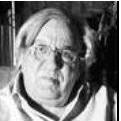
Dr. Parviz Rajabi has been highly critical of Iranians who defend their heritage against anti-Persian Eurocentrists.
کميته بين المللی نجات پاسارگاد